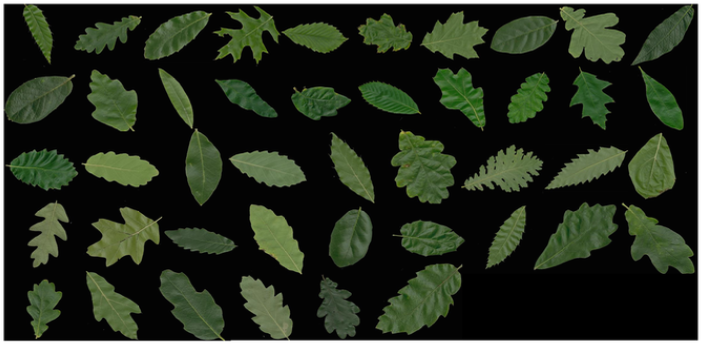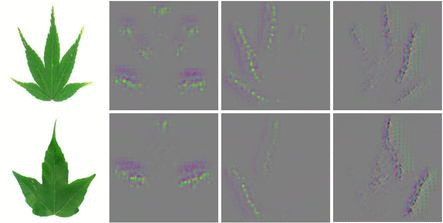Plant Classification


Abstract: Plant identification systems developed by computer vision researchers have helped botanists to recognize and identify unknown plant species more rapidly. Hitherto, numerous studies have focused on procedures or algorithms that maximize the use of leaf databases for plant predictive modeling, but this results in leaf features which are liable to change with different leaf data and feature extraction techniques. In this work, we learn useful leaf features directly from the raw representations of input data using Convolutional Neural Networks (CNN), and gain intuition of the chosen features based on a Deconvolutional Network (DN) approach. We report somewhat unexpected results: (1) different orders of venation are the best representative features compared to those of outline shape, and (2) we observe multi-level representation in leaf data, demonstrating the hierarchical transformation of features from lower-level to higher-level abstraction, corresponding to species classes. We show that these findings fit with the hierarchical botanical definitions of leaf characters. Through these findings, we gained insights into the design of new hybrid feature extraction models which are able to further improve the discriminative power of plant classification systems.
Journal Paper: IEEE Transactions on Image Processing (T-IP 2018)
Multi-Organ Plant Classification based on Convolutional and Recurrent Neural Networks [Github]
Sue Han Lee, Chee Seng Chan and Paolo Remagnino
Journal Paper: Pattern Recognition, vol. 71, pp. 1-13 (PR 2017)
How Deep Learning Extracts and Learns Leaf Features for Plant Classification [Github]
Sue Han Lee, Chee Seng Chan, Simon Mayo and Paolo Remagnino
Conference Paper: Proc. of IEEE International Conference on Image Processing (ICIP 2017)
HGO-CNN: Hybrid Generic-Organ Convolutional Neural Network for Multi-Organ Plant Classification [Github]
Sue Han Lee, Yang Loong Chang, Chee Seng Chan and Paolo Remagnino
Working Note: Working Notes of CLEF 2016, pp. 502-510 (PlantClef 2016)
Plant identification system based on a convolutional neural network for the lifeclef 2016 plant classification task
Sue Han Lee, Yang Loong Chang, Chee Seng Chan and Paolo Remagnino
Conference Paper: Proc. of IEEE International Conference on Image Processing, pp. 452-456 (ICIP 2015, ORAL)
Deep-Plant: Plant Identification with Convolutional Neural Networks [Presentation Slide (89Mb)]
Sue Han Lee, Chee Seng Chan, Paul Wilkin and Paolo Remagnino
Dataset and Code:

MalayaKew (MK) Leaf dataset was collected at the Royal Botanic Gardens, Kew, England. It consists of scan-like images of leaves from 44 species classes. This dataset is very challenging as leaves from different species classes have very similar appearance. The source code and models are available at: [Github]
Details and Download ...Paper Highlights:
- A deep learning approach to quantify discriminatory leaf is proposed.
- Shape is not a dominant feature for leaf but rather the different orders of venation.
- Paper findings archived fit with the hierarchical botanical definitions of leaf characters
- Features learned using deep learning can improve plant recognition performance.
Qualitative Results: The experimental results demonstrate the effectiveness of using deep learning (deconvolution) in understanding plant classification systems. For instance, we observe multi-level representation in leaf data, demonstrating the hierarchical transformation of features from lower-level to higher-level abstraction, corresponding to species classes.



Quatitative Results: The experimental results on PlantClef2015 demonstrate the effectiveness of using our proposed method (HGO-CNN) in plant classification. BD = Borda count and MAV = Majority Voting.


Acknowledgement
This research is supported by the Postgraduate Research Grant (PPP) PG007-2016A, from the University of Malaya, and the Titan X used for this research was donated by the NVIDIA Corporation. Any opinions, findings, and conclusions or recommendations expressed in this material are those of the author(s) and do not necessarily reflect the views of the University of Malaya.